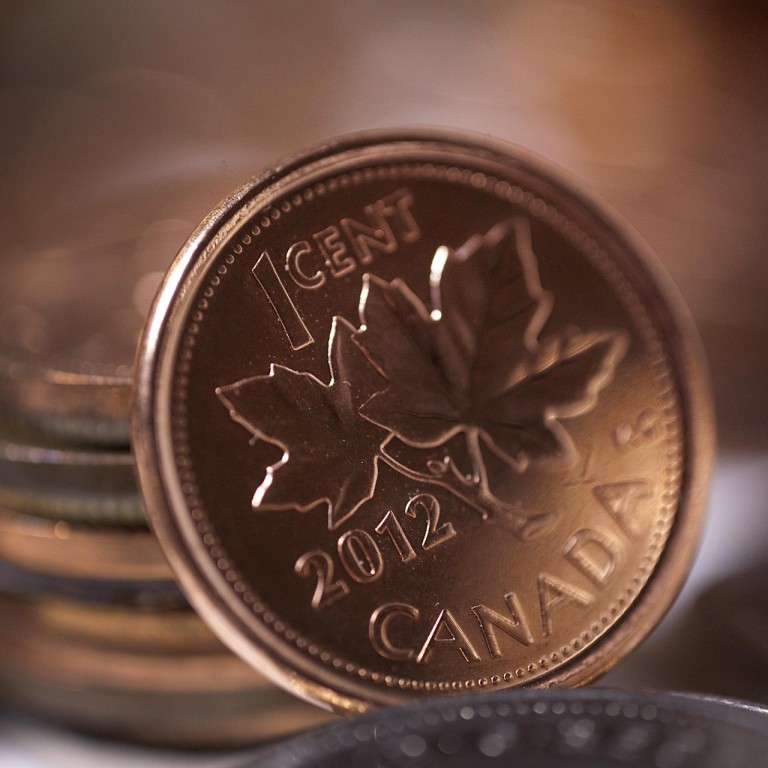
Worst to come for Canadian 'loonie' as oil prices fall
Loonie at five-year low against the US dollar as the energy-dependent economy is badly hit by oversupply and weak demand in the oil sector
The oil boom that powered Canada's recovery from its 2009 recession is turning into a bust for the nation's currency.

"The risk is, a sustained push lower in oil prices cuts Canadian growth," said Shaun Osborne, the chief currency strategist at Toronto-Dominion, Canada's largest bank. "Any sort of setback for growth and investment in the energy sector is likely to have a fairly significant knock-on effect for the rest of the economy."
The slide in oil, caused by a combination of oversupply and falling global demand, is a setback for Canada. Since the recession, most new business investment and jobs have come from the oil-rich province of Alberta. The nation's trade surplus turned into a deficit in August, and economic growth stalled the previous month.
Money managers are boosting bets the Canadian dollar will keep weakening. Hedge funds and other large speculators pushed net-bearish wagers on the currency to 16,167 contracts in the week ending October 17, the most since June, according to the Commodity Futures Trading Commission in Washington. Investors held net-long positions as recently as September 26.
The so-called loonie, nicknamed for the image of the aquatic bird on the C$1 coin, has fallen 5.5 per cent versus the US dollar this year, after sliding 6.6 per cent in 2013.
RBC had predicted a drop to C$1.18 by the end of 2015 before the slide in oil prices, though now that it is happening, the bank sees the currency falling even more.
"We've already been negative on the Canadian dollar, but that hasn't really incorporated negative oil prices," said Greg Moore, a senior currency strategist at RBC. "What's been driving capital expenditure so far has been oil-based, oil-sands-focused."
The North American rate against which Canadian oil grades are priced, West Texas Intermediate, slipped to US$79.78 a barrel on October 16, dipping below US$80 a barrel for the first time in more than two years. Brent crude, the international benchmark, sank to US$82.60 the same day, the lowest since November 2010. Bank of America Corp and BNP Paribas predict prices will hold above US$80 a barrel.
A jump in oil prices earlier this year benefited Canada's economy and its dollar, helping the nation recover from last year's housing-market slump. Western Canadian crude output climbed almost 50 per cent from 2005 to last year, data from the Canadian Association of Petroleum Producers show.
What had been a blessing is becoming a burden.
Brent prices are approaching levels at which Canada's oil industry will cease to be profitable. The so-called break-even point for about 25 per cent of the nation's oil projects is US$80 a barrel, according to the International Energy Agency.
Extracting Canada's heavy oil from Alberta sands is a more labour-intensive process than required for other grades.
A third of private-sector capital spending in Canada is tied to Alberta's oil, according to RBC estimates. Production in the province is responsible for all of the country's net employment growth for the 12 months ending July.
"Persistently lower-than-assumed oil prices" may have "a material impact on investment and activity in the oil sector," the Bank of Canada said in its quarterly monetary policy report, after keeping its main interest rate at 1 per cent. The economy would not reach full output until the second half of 2016, according to the report.
Canada posted an unforeseen C$610 million (HK$4.2 billion) trade deficit in August. The economy stagnated in July, after a second-quarter expansion led by exports.
Canada's currency will depreciate to C$1.17 per US dollar next year and may weaken to C$1.30 in the longer term as slower growth pushes up unemployment, according to Toronto-based Sprott Asset Management, which oversees C$7.5 billion.
"We're a commodity currency, so the currency gets crushed" as raw materials drop, said Michael Craig, who manages fixed-income hedge funds at the company.
"It's a pretty simple play book. You're going to see an acceleration in the weakness of the Canadian dollar. It's going to go a lot faster than people think."

